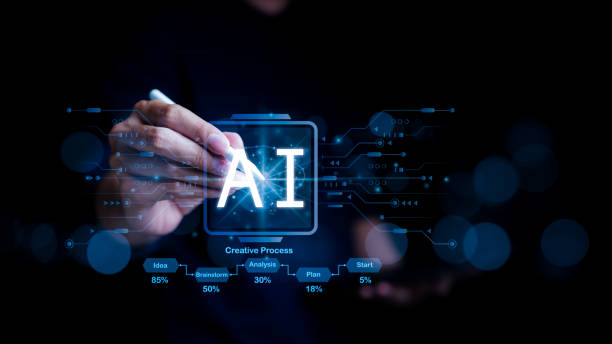What is an AI Robot and How Does It Work?

#AI_robot is a combination of two important #technology fields: #robotics and #artificial_intelligence.
In short, an AI robot is a machine capable of performing tasks that typically require human intelligence.
These tasks can include learning, reasoning, problem-solving, natural language understanding, and even creativity.
AI robots analyze data using machine learning algorithms and use this data to improve their performance.
In this way, they can become more proficient in their tasks over time.
#AI_robots have made significant progress in recent years and are used in various industries, including #healthcare, #manufacturing, #transportation, and #customer_services.
To better understand the functioning of #AI_robots, they can be considered as a closed-loop system.
This system includes sensors, processors, and actuators.
Sensors collect information from the environment, processors analyze this information, and actuators execute the processed commands.
For example, an AI robot designed to assist the elderly might use visual sensors to recognize faces and auditory sensors to understand voice commands.
The processor analyzes this information and instructs the robot to move towards the target person or execute their commands.
The main difference between #AI_robots and traditional robots is that traditional robots operate based on pre-programmed instructions, while #AI_robots are capable of learning and adapting to new conditions.
This capability makes #AI_robots much more efficient in dynamic and unpredictable environments.
Are you bothered by losing customers who visited your site to make a purchase?
RasaWeb is your specialized solution for a successful online store.
✅ Significantly increase your online sales
✅ Build trust and professional branding among customers⚡ Get a free consultation from RasaWeb specialists!
Types of AI Robots and Their Applications
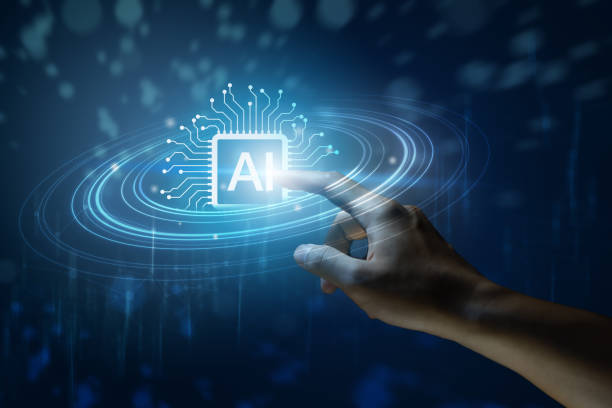
#AI_robots can be classified based on various criteria, including the type of tasks they perform, the type of sensors they use, and the type of machine learning algorithms employed.
One of the most common classification methods is based on their applications.
Generally, #AI_robots can be divided into the following categories:
#Industrial_robots: These robots are used in factories and production lines to perform repetitive and precise tasks such as welding, painting, and packaging.
#Industrial_AI_robots can work at much higher speeds and with greater accuracy than humans, helping to increase productivity and reduce costs.
#Service_robots: These robots are designed to provide services to humans in various environments such as hospitals, hotels, restaurants, and homes.
#Service_AI_robots can perform tasks such as cleaning, food delivery, caring for the elderly and children, and providing information.
The use of #service_AI_robots can help improve people’s quality of life and reduce their workload.
#Medical_robots: These robots are used in operating rooms and laboratories to perform complex surgeries, assist in diagnosing diseases, and conduct precise tests.
#Medical_AI_robots can operate with much higher accuracy than humans and reduce the risk of errors.
#Military_robots: These robots are used to perform dangerous and high-risk tasks in battlefields such as reconnaissance, bomb disposal, and equipment transportation.
#Military_AI_robots can protect soldiers’ lives and help increase security.
#Space_robots: These robots are used for exploration and research in space.
#Space_AI_robots can help collect soil samples, study planets, and conduct scientific experiments.
Machine Learning and Its Role in the Development of AI Robots

#Machine_Learning is one of the most important branches of #Artificial_Intelligence that enables #AI_robots to learn from data and improve their performance without explicit programming.
In other words, instead of programmers providing all the necessary instructions for a robot to perform a task, #Machine_Learning allows the robot to identify patterns and relationships by analyzing data and make decisions based on them.
Machine learning algorithms can be divided into three main categories: supervised learning, unsupervised learning, and reinforcement learning.
In #supervised_learning, the robot is presented with a set of data with specific labels, and the robot tries to find a relationship between the data and the labels.
For example, if a robot is presented with a set of dog and cat images with “dog” and “cat” labels, the robot can learn how to distinguish dog and cat images from each other.
In #unsupervised_learning, the robot is presented with unlabeled data, and the robot tries to identify hidden patterns and structures in the data.
For example, if a robot is presented with a set of data related to customer behavior in a store, the robot can identify different groups of customers based on their buying patterns.
In #reinforcement_learning, the robot learns through interaction with its environment what actions to take to receive more rewards.
For example, a game-playing robot can learn how to choose the best strategy to win the game by playing multiple games.
The use of #Machine_Learning in #AI_robots has enabled these robots to perform more complex tasks and operate in more dynamic and unpredictable environments.
| Type of Machine Learning | Description | Example |
|---|---|---|
| Supervised Learning | Learning from labeled data | Image recognition |
| Unsupervised Learning | Learning from unlabeled data | Customer clustering |
| Reinforcement Learning | Learning through interaction with the environment | Playing games |
Challenges and Limitations of AI Robots
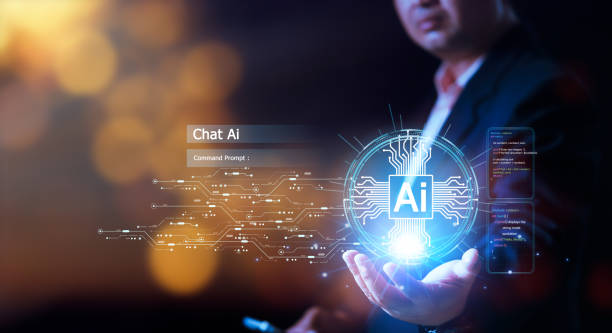
Despite significant advances in the field of #AI_robots, there are still many challenges and limitations that need to be overcome.
One of the most important challenges is the #high_cost of developing and maintaining #AI_robots.
Designing, building, and training #AI_robots require various specialized skills and, therefore, entail high costs.
In addition, #AI_robots may require periodic repair and maintenance, which also incurs additional costs.
Another challenge is the #ethical_limitations of using #AI_robots.
Given that #AI_robots are capable of making independent decisions, the question arises as to who is responsible for their decisions? For example, if a self-driving robot causes an accident, who will be responsible? Also, there are concerns about the #impact_of_AI_robots on the job market.
With the widespread use of #AI_robots, many jobs may be lost, which could lead to increased #unemployment and #social_inequality.
#Security is also another important challenge in the field of #AI_robots.
#AI_robots may be exposed to cyberattacks, and hackers may take control of them.
This could have serious consequences, especially if #AI_robots are used in sensitive industries such as #healthcare and #military.
Does your company website perform as well as your brand deserves? In today’s competitive world, your website is your most important online tool. RasaWeb, a specialist in professional corporate website design, helps you to:
✅ Gain customer credibility and trust
✅ Convert website visitors into customers
⚡ Get a free consultation!
The Future of AI Robots: Perspectives and Possibilities
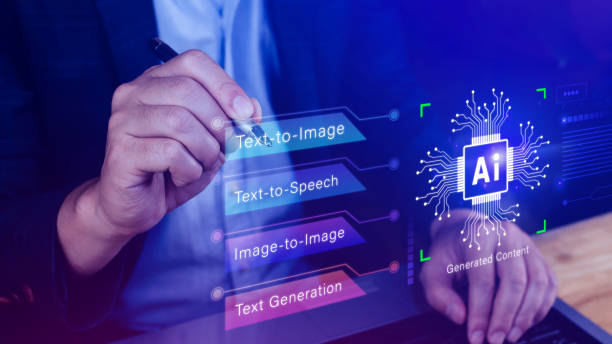
The future of #AI_robots is very bright and full of possibilities.
With continuous advancements in #Artificial_Intelligence and #Robotics, #AI_robots are expected to play a more significant role in human lives and bring about major transformations in various industries.
One of the most important future prospects is the #expansion_of_AI_robots_use in homes.
In the future, we may see the presence of domestic #AI_robots capable of performing tasks such as cleaning, cooking, caring for children and the elderly, and providing entertainment services.
These robots can help people have an easier and more comfortable life.
#AI_robots can also play an important role in solving #social and #environmental_problems.
For example, #AI_robots can be used for waste collection, pollution clean-up, and environmental protection.
Also, #AI_robots can be designed to assist disabled and less-abled individuals, enabling them to live more independently.
In the field of #medicine, #AI_robots can help with early disease diagnosis, performing precise surgeries, and providing personalized treatments.
Also, #AI_robots can be designed to assist the elderly and chronically ill patients, enabling them to be cared for in their own homes.
The Impact of AI Robots on the Job Market and Economy

The impact of #AI_robots on the job market and economy is one of the most controversial and challenging topics.
On one hand, #AI_robots can contribute to economic growth by increasing productivity, reducing costs, and creating new opportunities.
On the other hand, #AI_robots can lead to #unemployment and #social_inequality by replacing human labor.
Some experts believe that #AI_robots will primarily affect repetitive and low-skilled jobs, while others believe that #AI_robots can even automate complex and creative jobs.
To counter the negative effects of #AI_robots on the job market, measures need to be taken in the area of #education and #retraining of the workforce.
Individuals need to learn new skills that are compatible with the needs of the future job market.
Also, policies need to be adopted to support unemployed and low-income individuals.
One of the proposed solutions is to provide #universal_basic_income to all citizens.
By providing #universal_basic_income, individuals can pursue new job opportunities and learn new skills without worrying about covering their living expenses.
Furthermore, it is necessary to promote a #culture_of_entrepreneurship and #innovation.
Individuals should be encouraged to start new businesses and provide innovative solutions to social and economic problems.
The government should also support entrepreneurs and innovators by providing financial and legal assistance.
#AI_robots can have a significant impact on every individual’s life, and it is necessary to study them further.
AI Robots and Ethics: Key Considerations
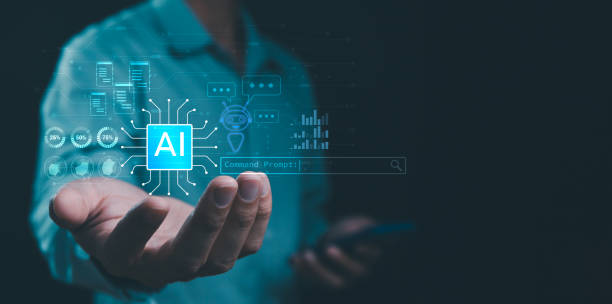
#AI_robots, with their increasing capabilities, raise important #ethical issues that require careful attention and consideration.
One of the most important ethical issues is the #accountability of #AI_robots.
If a self-driving robot causes an accident or a medical robot makes a wrong diagnosis, who will be responsible? Should the #robot be held responsible, or its designers and manufacturers? Determining accountability in these cases is a complex challenge that requires new laws and regulations.
Another issue is #privacy and #data_security.
#AI_robots need to collect and analyze a large amount of data to perform their tasks.
This data may include individuals’ personal information.
Therefore, mechanisms must be established to protect individuals’ privacy and prevent misuse of data.
Also, the #security of #AI_robots against cyberattacks must be ensured.
Hackers should not be able to take control of #AI_robots and use them for malicious purposes.
#Transparency and #explainability are also among the important ethical considerations in the field of #AI_robots.
Individuals should be able to understand how #AI_robots work and how they make decisions.
The machine learning algorithms used in #AI_robots should not be black boxes whose functionality no one can understand.
Efforts should be made to make algorithms as transparent and explainable as possible.
| Ethical Issue | Description | Proposed Solution |
|---|---|---|
| Accountability | Determining responsibility in case of error | Creation of new laws and regulations |
| Privacy and Data Security | Protection of individuals’ personal information | Establishment of strong security mechanisms |
| Transparency and Explainability | Understanding how the #robot operates and makes decisions | Use of transparent algorithms |
How to Build an AI Robot: A Step-by-Step Guide
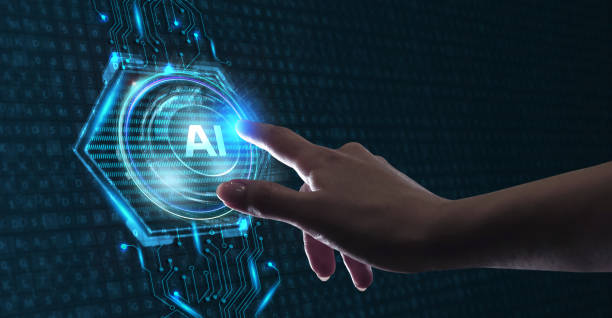
Building an #AI_robot can be a challenging yet very exciting project.
To start, you need various knowledge and skills, including programming, electronics, and #Artificial_Intelligence.
In this section, we provide a step-by-step guide for building a simple #AI_robot:
- Define the Goal: First, you need to specify what your robot is going to do.
Do you want to build a line-following robot, a face-recognition robot, or a game-playing robot? Defining the goal helps you choose the right tools and techniques. - Choose Hardware: After defining the goal, you need to select appropriate hardware.
The main hardware of a robot includes a microcontroller (such as #Arduino or #RaspberryPi), sensors (such as light, sound, temperature, and distance sensors), and actuators (such as motors, LEDs, and speakers). - Programming: After selecting the hardware, you need to write the robot’s program.
The robot’s program specifies how the robot should interact with sensors and actuators and how it should perform its tasks.
For programming #AI_robots, you can use various programming languages such as #Python, #C++, and #Java. - Training: If you want your robot to be able to learn and adapt to new conditions, you need to use machine learning algorithms.
To train the #robot, you need a set of data.
For example, if you want your robot to be able to recognize faces, you need to provide it with a set of face images. - Test and Improve: After building and training the robot, you need to test it and improve its performance.
Testing the robot helps you identify and fix its bugs and flaws.
Improving robot performance is an ongoing process that requires patience.
Building an #AI_robot is a complex process, but with effort and perseverance, you can build an efficient and intelligent AI robot.
#AI_robots are also expanding in Iran through the efforts of researchers.
Are you dissatisfied with the low sales of your online store?
RasaWeb is your solution for having a professional and high-selling online store.
✅ Significant increase in sales and revenue
✅ Easy and enjoyable shopping experience for customers
⚡ Get a free consultation from RasaWeb now!
AI Robots in Iran: Current Status and Challenges

#AI_robots in Iran are an emerging but growing field.
In recent years, many efforts have been made to develop #Artificial_Intelligence and #Robotics in Iran.
Numerous universities and research centers are active in this field, and various projects are underway.
However, #AI_robots in Iran still face many challenges.
One of the most important challenges is the shortage of #financial_resources and #equipment.
Developing #AI_robots requires large investments and access to advanced equipment, which is currently not sufficiently available in Iran.
Another challenge is the shortage of #skilled_human_resources.
Developing #AI_robots requires specialized knowledge and skills in various fields, which are currently not sufficiently available in Iran.
To solve this problem, appropriate educational and research programs need to be established in universities and research centers.
The #migration of elites and specialists is another important challenge in the field of #AI_robots in Iran.
Many Iranian elites and specialists migrate to other countries due to a lack of job opportunities and research facilities.
To prevent this problem, conditions must be provided so that Iranian elites and specialists can work in their own country.
Despite these challenges, #AI_robots in Iran have high potential for growth and development.
With government support and private sector investment, #AI_robots in Iran can be transformed into a leading field in the region.
Iran, with its abundant capacities, can achieve a high position in the field of #AI_robots.
Frequently Asked Questions About AI Robots
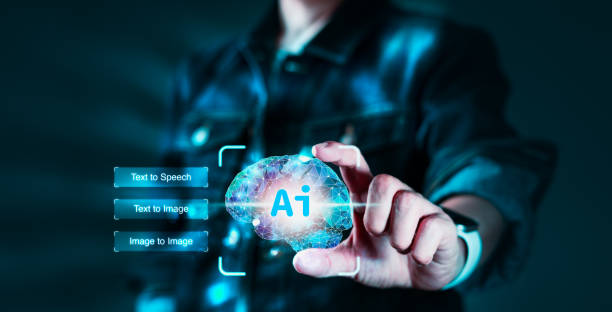
In this section, we answer some frequently asked questions about #AI_robots:
- Will #AI_robots replace humans? This is one of the most common questions about #AI_robots.
The answer to this question depends on the type of work and the required skill level.
#AI_robots can be very efficient in performing repetitive and low-skilled tasks, and in these cases, they may replace humans.
However, in jobs requiring creativity, critical thinking, and social skills, humans will continue to play an important role. - Are #AI_robots dangerous? #AI_robots can be dangerous, especially if not properly designed and controlled.
For example, a self-driving robot might cause an accident, or a military robot might mistakenly attack innocent people.
To reduce these risks, strict laws and regulations must be established for the design and use of #AI_robots. - Will #AI_robots become conscious? Currently, #AI_robots are not conscious and only operate based on programmed algorithms.
However, with continuous advancements in #Artificial_Intelligence, it is possible that #AI_robots may become conscious in the future.
The consciousness of #AI_robots raises complex ethical and philosophical issues that require careful consideration. - How can I learn more about #AI_robots? To learn more about #AI_robots, you can use various resources such as books, articles, online courses, and specialized websites.
You can also participate in conferences and seminars related to #Artificial_Intelligence and #Robotics.
We hope this article has helped you gain a better understanding of #AI_robots.
Frequently Asked Questions
| Question | Answer |
|---|---|
| What is an AI robot? | An AI robot is a machine capable of understanding its environment, reasoning, learning, and making decisions to perform tasks autonomously. |
| What is the difference between regular robots and AI robots? | Regular robots perform repetitive tasks based on prior programming, while AI robots can learn from experience, interact dynamically with the environment, and even behave in ways that resemble human intelligence. |
| What are the main applications of AI robots? | They are used in industries (manufacturing, assembly), medicine (surgery, diagnosis), services (customer support, domestic), exploration (space, underwater), and many other fields. |
| What technologies are used in building AI robots? | Machine Learning, Computer Vision, Natural Language Processing, Deep Learning, and Robotics are among the key technologies. |
| Can AI robots have emotions? | Currently, robots do not have emotions in the human sense. They can identify and react to emotions, but they do not experience emotions themselves. |
| What are the main challenges in developing AI robots? | Safety, reliability, ethics, autonomy, adaptability to complex environments, and natural human-robot interaction are important challenges. |
| How are AI robots trained? | They are typically trained using large amounts of data, machine learning algorithms, and deep learning to identify patterns and make decisions. |
| Examples of AI robots in everyday life? | Smart robotic vacuum cleaners, customer support chatbots, self-driving cars, and surgical robots in hospitals. |
| Are AI robots a threat to human jobs? | Some repetitive jobs may be automated, but at the same time, robots can increase productivity and create new jobs in the development, maintenance, and supervision of these systems. |
| How is the future of AI robots predicted? | They are expected to become smarter, more autonomous, and capable of performing more complex tasks, and will interact more closely with humans in various environments. |
And other services of RasaWeb Advertising Agency in the field of advertising
- Smart Marketing Automation: A creative platform for improving campaign management with marketing automation.
- Smart Direct Marketing: A combination of creativity and technology to attract customers through SEO-driven content strategy.
- Smart Brand Identity: An effective tool for user interaction through precise audience targeting.
- Smart Digital Advertising: Revolutionize click-through rates with Google Ad management.
- Smart Sales Automation: An effective tool for online growth through custom programming.
And over hundreds of other services in the field of internet advertising, advertising consultation, and organizational solutions
Internet Advertising | Advertising Strategy | Advertorials
Sources
The Future of AI Robots on Digiato
Comprehensive Guide to AI Robots on Zoomit
Advancements in Robotics and Artificial Intelligence on IRNA
Applications of Artificial Intelligence in Iran on ISNA
? For significant growth of your business in the digital world, RasaWeb Avarin offers comprehensive digital marketing solutions. With our professional services, from WordPress website design to SEO and social media management, experience a powerful and impactful presence.
📍 Tehran, Mirdamad Street, next to Central Bank, Kazeroon Janoubi Alley, Ramin Alley, No. 6

